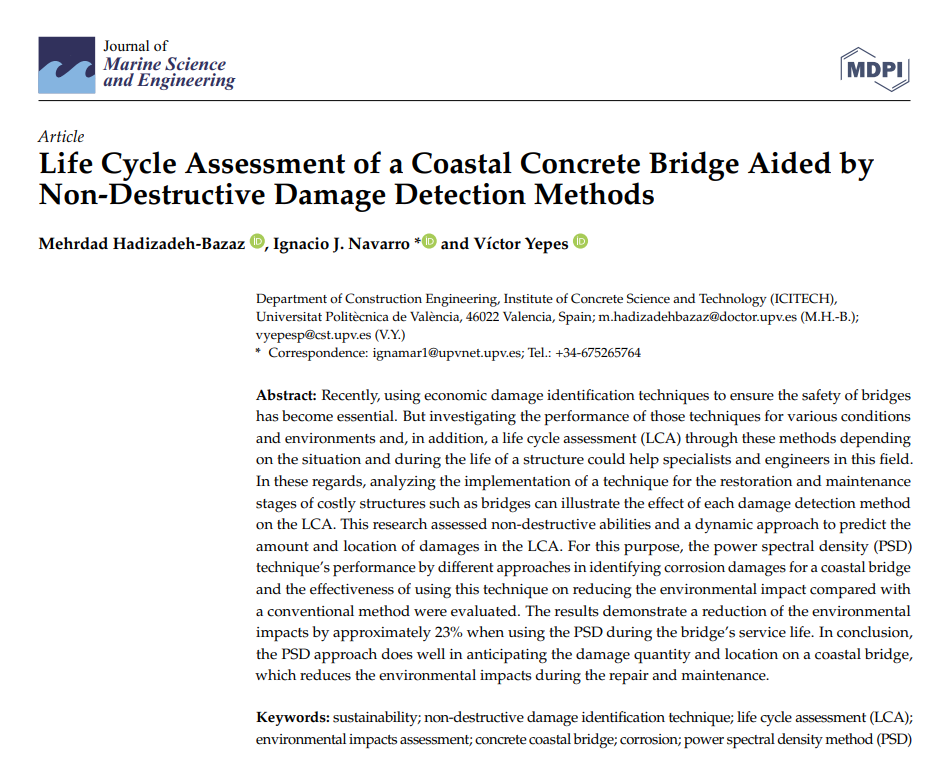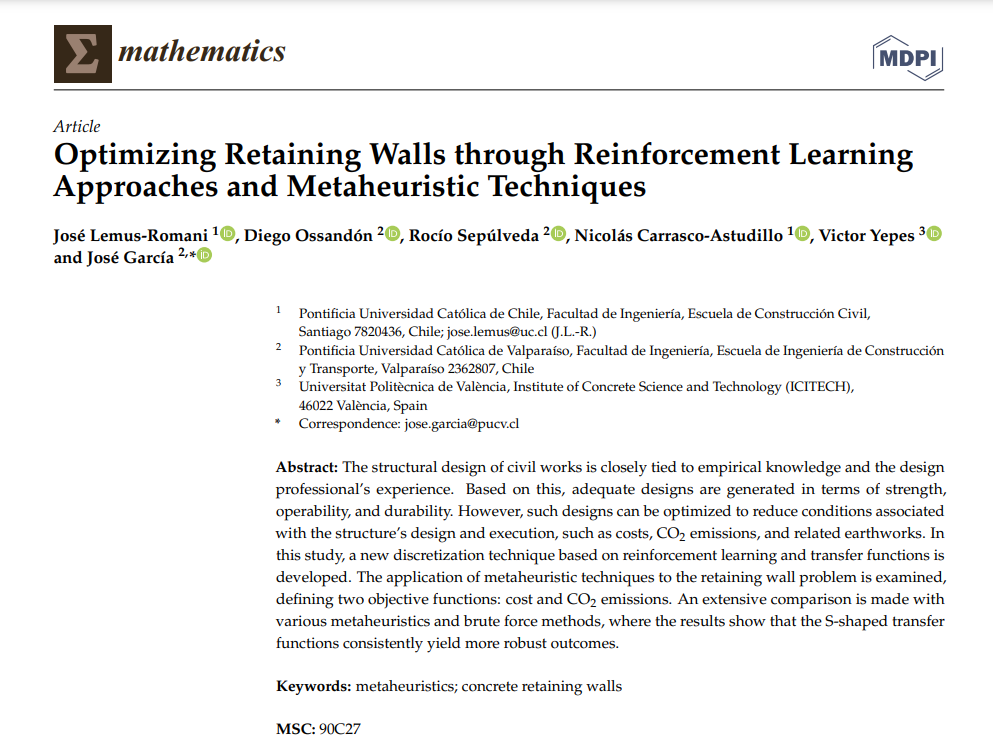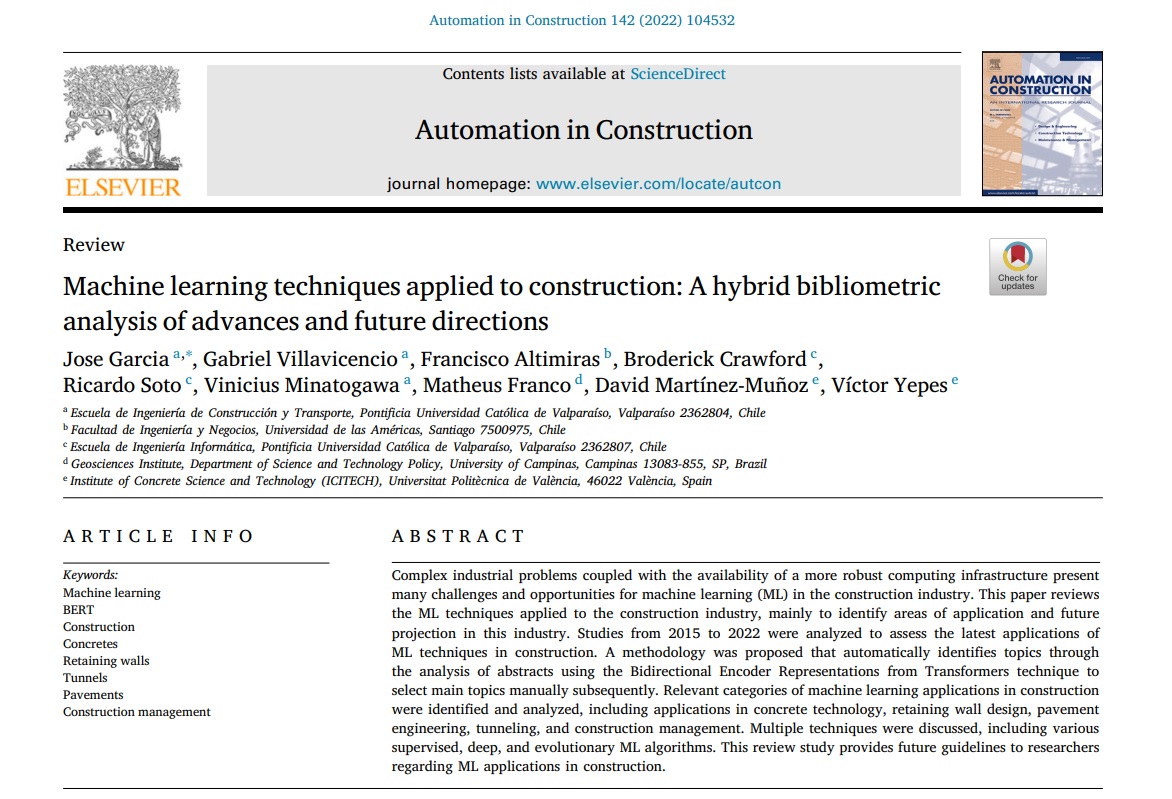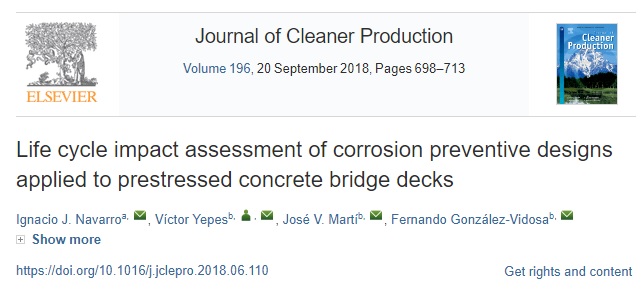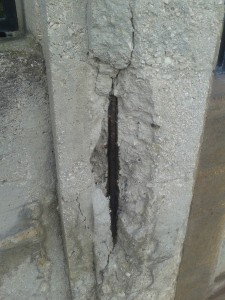 Uno de los artículos más citados en nuestro grupo de investigación es el que vamos a explicar a continuación. El artículo de García-Segura, Yepes y Alcalá examina en profundidad si la reducción de las emisiones de gases de efecto invernadero derivadas del uso de cementos con adiciones compensa la disminución de su durabilidad y la reducción de la captura de CO₂ en comparación con el cemento Portland convencional.
Uno de los artículos más citados en nuestro grupo de investigación es el que vamos a explicar a continuación. El artículo de García-Segura, Yepes y Alcalá examina en profundidad si la reducción de las emisiones de gases de efecto invernadero derivadas del uso de cementos con adiciones compensa la disminución de su durabilidad y la reducción de la captura de CO₂ en comparación con el cemento Portland convencional.
Esta pregunta define con precisión el problema de investigación y estructuró el estudio en torno al impacto ambiental de diferentes mezclas de cemento, desde la producción hasta la demolición. La formulación de esta pregunta permite establecer objetivos específicos y una metodología rigurosa que garantice una evaluación cuantitativa y cualitativa de los efectos de la carbonatación y de la vida útil de las estructuras construidas con estos materiales.
El estudio se basa en un análisis del ciclo de vida (LCA, por sus siglas en inglés) aplicado a una columna de hormigón armado de 3 metros de altura y sección transversal de 30 x 30 cm², reforzada con cuatro barras de acero de 20 mm de diámetro y con un recubrimiento de hormigón de 30 mm. Se evalúa el impacto ambiental de diferentes mezclas de cemento: Portland (CEM I), cementos adicionados con cenizas volantes (CEM II/A-V y CEM II/B-V) y cementos con escoria de alto horno (CEM II/B-S, CEM III/A y CEM III/B). La metodología incluye:
- Producción: Se calculan las emisiones derivadas de la extracción y procesamiento de materias primas, incluyendo el transporte hasta la planta de hormigón y la fabricación de barras de acero, considerando tasas de reciclaje.
- Construcción: Se incluyen las emisiones por bombeo y vibrado del hormigón.
- Uso: Se determina la durabilidad mediante el modelo de Tuutti, diferenciando las etapas de iniciación y propagación de la corrosión del acero embebido en función de la carbonatación.
- Demolición y reciclaje: Se evalúa la captura de CO₂ tras la demolición, considerando el impacto del tamaño del árido reciclado y el entorno de exposición.
La captura de CO₂ se cuantifica mediante ecuaciones basadas en la difusión de carbonatación, considerando coeficientes de carbonatación variables en función de la composición del cemento y del nivel de exposición ambiental.
El trabajo aporta datos cuantitativos sobre la relación entre las emisiones iniciales y la captura de CO₂ en cada etapa del ciclo de vida del hormigón. Se identifican las siguientes contribuciones clave:
- Reducción de emisiones en la producción: CEM III/B (80% BFS) emite 70% menos CO₂ en su fabricación comparado con el cemento Portland.
- Durabilidad reducida: Cementos con alto reemplazo de clinker presentan una vida útil 10% menor debido a una mayor tasa de carbonatación.
- Captura de CO₂: Durante su uso, CEM III/B captura solo el 22% del CO₂ capturado por el cemento Portland. Considerando la demolición, el porcentaje asciende a 20%.
- Impacto de reciclaje: Si el hormigón demolido se expone al aire, la captura de CO₂ puede reducir las emisiones totales en un 47%.
Los resultados muestran que, si bien los cementos con adiciones reducen las emisiones en la etapa de producción, su menor durabilidad aumenta las emisiones anuales. El cemento CEM III/B reduce inicialmente las emisiones en un 70 %, pero solo logra una disminución del 20 % cuando se consideran las emisiones anuales. Esto sugiere que, a la hora de seleccionar cemento, hay que equilibrar la reducción de emisiones iniciales con la vida útil de la estructura. La investigación también destaca la importancia de garantizar la exposición del hormigón reciclado al aire para maximizar su capacidad de secuestro de carbono.
Se identifican tres áreas clave para futuras investigaciones:
- Optimización de cementos adicionados: Investigación sobre el uso de aditivos y ajustes en la dosificación para mejorar la durabilidad sin comprometer la reducción de emisiones.
- Impacto ambiental de diferentes climas: Evaluación de la carbonatación y la vida útil del hormigón en condiciones climáticas diversas.
- Estrategias para maximizar la captura de CO₂ post-demolición: Desarrollo de procesos para incrementar la exposición del agregado reciclado al aire y mejorar la captura de carbono.
En resumen, el estudio ofrece un análisis exhaustivo de las emisiones de gases de efecto invernadero asociadas al uso de cementos modificados. Aunque la reducción de emisiones en la producción de estos cementos es significativa, la menor durabilidad y la reducida captura de CO₂ requieren un análisis cuidadoso para garantizar la sostenibilidad del hormigón a largo plazo. La investigación subraya la necesidad de estrategias complementarias que optimicen la combinación entre las emisiones iniciales y la vida útil estructural para reducir el impacto ambiental global del sector de la construcción.
Referencia:
GARCÍA-SEGURA, T.; YEPES, V.; ALCALÁ, J. (2014). Life-cycle greenhouse gas emissions of blended cement concrete including carbonation and durability. International Journal of Life Cycle Assessment, 19(1):3-12. DOI:10.1007/s11367-013-0614-0
Esta es la versión post-print de autor. La publicación se encuentra en: https://riunet.upv.es/handle/10251/49057, siendo el Copyright de Springer Verlag (Germany).

